Book Publishing
Book Publishing. Picture yourself gently turning the pages of a beautifully bound book, its crisp smell of ink and paper wafting through the air. A romantic vision, indeed. But have you ever paused to wonder about the journey this book has traversed before reaching your hands? That’s where the fascinating world of book publishing steps in.
Table of Contents
A Flashback Through History
The history and evolution of book publishing is akin to an epic novel itself. Dating back to the invention of the Gutenberg Printing Press in 1440, book publishing was revolutionized, forever altering the course of human knowledge sharing. Originally, publishing was a labor-intensive, painstakingly slow process, done by monks who manually copied each page. Post Gutenberg, printed books – also known as incunabula – surged across Europe, disseminating ideas at a pace never seen before.
As we catapult ourselves to the digital age, book publishing is no longer a prerogative of the select few. Traditional publishing houses, self-publishing platforms, and e-books are the dynamic characters of today’s publishing saga, providing a plethora of options to modern authors. A comprehensive review of this journey offers insight into how publishing has democratized knowledge and given voice to myriad perspectives.
Why Aspiring Authors Should Understand the Publishing Industry
As the famous saying goes, “knowledge is power”. Aspiring authors who comprehend the nuances of the publishing industry are a step closer to seeing their names embossed on a book cover. Understanding the industry’s workings helps authors navigate contracts, select the best publishing avenue for their work, and engage effectively with readers and booksellers.
Imagine yourself as a sailor on the vast ocean of publishing, your book as your precious cargo. The deeper your understanding of the currents, waves, and weather (or in our case, market trends, audience preferences, and industry standards), the smoother your voyage to the shores of successful publication.
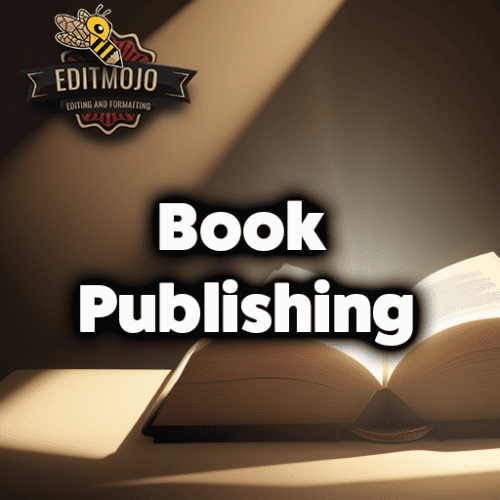
Purpose of this Guide
This guide aims to be your trusty compass, navigating through the vibrant yet sometimes daunting world of book publishing. Whether you dream of signing with a prestigious publishing house or lean towards the control and independence of self-publishing, we’re here to illuminate your path.
We’ll venture into the technicalities of book publishing, including selecting a suitable publishing model, understanding contracts, editing, design, and marketing. We’ll also share stories from the trenches – case studies and personal experiences from authors and industry professionals to lend practical insights.
The journey of book publishing can be tumultuous, but remember, every classic novel in your bookshelf has navigated this same journey. With this guide at your side, may you embark on this adventure armed with knowledge, courage, and that unwavering spark of creativity that makes you a writer. After all, as renowned author Stephen King once said, “To write is human, to edit is divine.” So, dear author, get ready to embrace your divinity as we dive into the mesmerizing world of book publishing.
Unfolding the Pages of Book Publishing: A Tale of Choices
Picture a book – its tangible heft, the scent of ink on paper, and the promise of a journey contained within its pages. That book is the product of a fascinating process called book publishing. This intricate journey weaves together authors, agents, editors, and publishers, transforming a mere idea into a printed and bound literary piece. In our digital age, there are numerous paths for an author’s words to take on their journey from the mind to the printed page (or e-book screen). In this article, we will delve into four significant types of book publishing – traditional, independent or self, hybrid, and vanity – and examine their pros and cons.
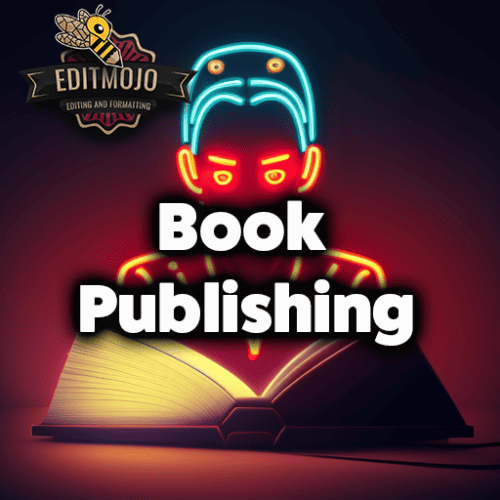
Traditional Publishing: The Classic Pathway
A classic choice among authors, traditional publishing, involves handing over the manuscript to a publishing house that takes care of the publishing processes from A to Z. They cover everything, from editing and designing to marketing and distributing the book. Renowned publishers such as Penguin Random House or HarperCollins exemplify this approach.
The primary advantage of traditional publishing is that it provides prestige and a professional touch. However, the journey is often long and arduous, involving rigorous submission processes and a potential loss of creative control.
Independent or Self-Publishing: The Power to the Author
Independent or self-publishing flips the script, putting the author in the driver’s seat. Platforms such as Amazon Kindle Direct Publishing have revolutionized this space, allowing authors to publish their books independently.
This type of publishing comes with the joy of complete creative control and potentially higher royalty rates. However, it requires the author to wear many hats – writer, editor, designer, marketer, and more. Hence, self-publishing may become overwhelming for those who are not prepared for these challenges.
Hybrid Publishing: The Middle Ground
As the name suggests, hybrid publishing offers a midway point between traditional and self-publishing. It brings together the best of both worlds, combining the accessibility of self-publishing with the services and structure of traditional publishing. Companies like She Writes Press are leading in this niche.
Hybrid publishing grants authors more control over the publishing process without entirely giving up the support provided by a professional team. However, authors typically have to invest financially in this model, which may not be feasible for everyone.
Vanity Publishing: The Costly Option
Lastly, we have vanity publishing, an avenue often pursued by authors who wish to see their work in print, cost notwithstanding. These authors fund the entire publishing process, typically with a company that offers this service, like AuthorHouse.
The glaring downside is that vanity publishers often provide little to no editorial or marketing support. However, if an author can bear the high cost and manage these aspects independently, this option can fast-track the publishing journey.
Decoding the Book Publishing Maze
Each publishing type carries its own unique allure and drawbacks. Traditional publishing adds the stamp of professional prestige but might limit creative control. Independent publishing empowers the author but requires wearing many hats. Hybrid publishing offers a balance but at a monetary cost. Vanity publishing may speed up the process but lacks professional support.
As authors, you need to weigh these pros and cons to find the publishing path that best aligns with your personal goals and resources. In this labyrinth of book publishing, may the choice you make lead you to a fruitful journey of sharing your words with the world.
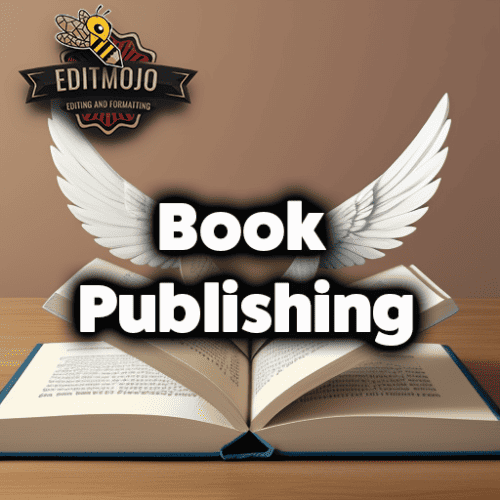
The Book Publishing Process Unveiled
The world of book publishing is akin to an intricate tapestry, woven with threads of creativity, determination, and a dash of bureaucratic processes. To some, it may seem intimidating, but a thorough understanding of the process can turn this labyrinth into a well-marked trail. As a published author myself, I can assure you that every step, every rewrite, every design choice is worth it when you finally see your work come to life. Let’s delve into the complexities and joys of book publishing.
Preparing your manuscript
Writing and refining your book
“The first draft of anything is crap,” said Ernest Hemingway, and that’s true for every writer. The first version of your book is simply a foundation on which you’ll construct your masterpiece. It’s about getting your thoughts down and then refining them. No book magically appeared as a bestseller in its first iteration. Patience and persistent editing lead to a polished product.
Finding a unique angle or story
It’s often said that every story has already been told. But it’s the way you tell your story, the unique angle you bring to it, that sets it apart. J.K. Rowling‘s Harry Potter isn’t just another tale about a wizard; it’s a coming-of-age story intertwined with themes of friendship, bravery, and sacrifice.
Understanding your target audience
Before your book reaches the shelves, it’s crucial to identify who will want to read it. If you are writing a children’s book, then child-friendly language and bright illustrations would be key. On the other hand, a high fantasy novel targeted towards adults may be rich in complex plot lines and thematic elements. Knowing your audience significantly influences your writing style, tone, and content.
Editing and Proofreading
The importance of professional editing
As an author, you’re too close to your work to see all its flaws. That’s where a professional editor comes in. They can spot inconsistencies, plot holes, and grammatical errors that you may overlook. Their expertise is indispensable in turning a good book into a great one.
The different levels of editing
There are several layers to the editing process. It starts with structural editing, where the overall content and organization of the book are reviewed. Then there’s line editing, which focuses on the flow of your writing, and copyediting, where grammar and punctuation are scrutinized. Finally, proofreading is the last line of defense against typos and formatting errors.
Hiring a freelance editor vs. utilizing publishing house editors
Whether to hire a freelance editor or rely on a publishing house editor depends on the type of publishing you choose. For self-publishing, a freelance editor is often necessary, while traditional publishing includes editing as part of the package.
Designing the book
Cover design: the psychology behind the first impression
First impressions matter, and that’s precisely what your cover design is. It has to intrigue potential readers and convey the essence of your book. The right colors, fonts, and images can create an emotional connection with the viewer before they’ve even read the first line. Book cover psychology plays a pivotal role in attracting readers.
Layout design: prioritizing readability
Interior design is just as critical as the cover. The layout should prioritize readability, with appropriate fonts, spacing, and margin sizes. The goal is to create a seamless reading experience.
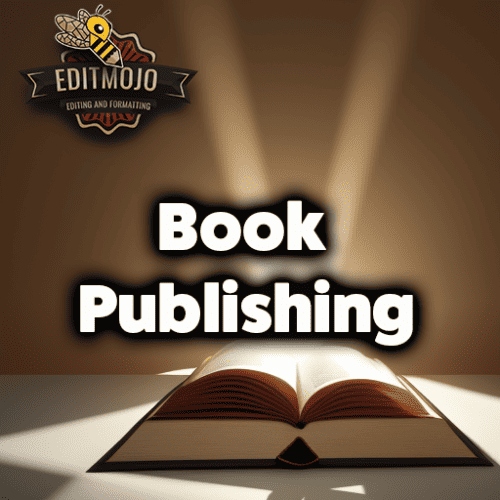
Legalities and Paperwork
Securing a copyright
Registering a copyright protects your intellectual property rights. It prevents others from using your work without permission and allows you to take legal action if your work is infringed.
Understanding libel laws
While it’s essential to tell a compelling story, understanding and adhering to libel laws is critical. This is especially true for memoirs or any book featuring real people and events.
Acquiring an ISBN
The International Standard Book Number (ISBN) is a unique identifier for your book. It’s necessary for selling your book in stores or online.
Production
Print runs and print-on-demand services
The evolution of technology has made the production of books more accessible than ever. Traditional print runs are ideal for large quantities, while print-on-demand is perfect for smaller quantities or self-publishers.
The rise of ebooks and audiobooks
In our digital age, more people are turning to ebooks and audiobooks. In fact, the audiobook industry has been growing rapidly over the past few years. These formats offer additional avenues for your book to reach readers worldwide.
And there you have it – the world of book publishing demystified. It’s a journey filled with challenges and victories, each step leading you closer to the day you hold your published book in your hands. It’s a process, an adventure, a masterpiece in the making.
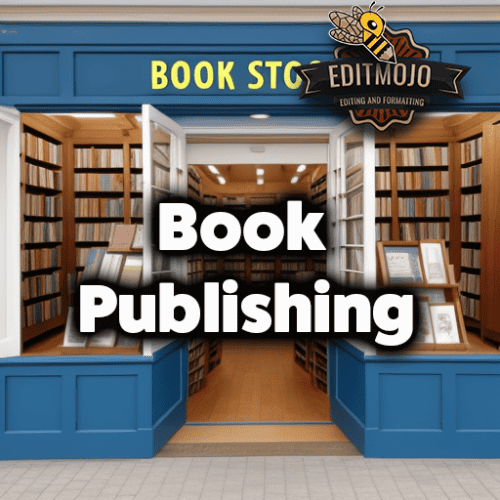
Book Publishing: Choosing the Right Publishing Path for You
Embarking on the journey of book publishing is an exciting feat, packed with dreams, aspirations, and yes, a fair share of trepidation. Just like a ship captain deciding the best route to traverse the vast ocean, as an author, you must chart your course in the publishing world, making critical decisions that will shape your voyage. This guide will assist you in assessing your resources, weighing your desire for creative control against professional support, considering your target market, and finally, helping you employ a decision matrix to settle on your ideal publishing path.
Assessing Your Resources: Time, Money, Skills
Like any other venture, publishing a book requires a certain investment of resources— time, money, and skills. An honest appraisal of what you have and what you need is the starting point.
Your time commitment will vary significantly depending on whether you’re aiming for traditional publishing, where much of the grunt work is handled by the publisher, or self-publishing, where you’re the captain, the crew, and the ship itself. The same applies to your financial resources. Traditional publishers bear the cost of editing, designing, printing, and marketing, while self-publishing requires a more substantial upfront financial investment.
As for skills, do you have what it takes to write, edit, design, and market your book? If not, are you willing to learn, or do you have the budget to hire professionals? Remember, the lack of a competent crew can run your ship aground.
Weighing Creative Control vs. Professional Support
Next, let’s navigate the delicate balance between creative control and professional support. Traditional publishing offers professional guidance at every step. However, this often comes at the cost of creative freedom. For instance, your publishing house might want changes in your manuscript, cover design, or title to suit market needs. In contrast, self-publishing offers you the complete freedom to execute your vision, but without the safety net of professional feedback.
Market Considerations and Your Target Audience
Another critical factor to contemplate is your target market. Who are they, and how do they consume books? Younger audiences might gravitate towards eBooks or audiobooks, making digital platforms like Amazon Kindle or Audible ideal for reaching them. If your book is more niche and academic, a traditional publisher specializing in that area might have better access to your audience.
Making the Decision: A Decision Matrix
Armed with a clear understanding of your resources, desired creative control, and target audience, you’re now ready to make a decision. One method to help is a decision matrix, a simple tool that can give you clarity.
In a spreadsheet, list all your options down one side (e.g., traditional publishing, self-publishing, hybrid publishing) and your factors across the top (time, money, skills, creative control, market access). Now, assign a score (1-10) for each factor under each option. For instance, if you value creative control above all and have ample time and resources, self-publishing might score high in your matrix.
Choosing a path in the book publishing industry can feel like navigating uncharted waters, but equipped with self-awareness, market understanding, and a decision matrix, you’re well-prepared to set sail on this thrilling voyage.
In the words of Mark Twain, “Sail away from the safe harbor. Catch the trade winds in your sails. Explore. Dream. Discover.” So, go ahead, explore your options, dream big, and discover the perfect path for your publishing journey.
Embarking on the Literary Journey: Unraveling the Maze of Traditional Book Publishing
Words are the mosaic of the human mind, waiting to be arranged, rearranged, and brought to life. But how does this colorful kaleidoscope of ideas reach the eyes of the world? Today, we navigate the intricate labyrinth of traditional book publishing, a voyage fraught with equal parts excitement and challenge.
Finding a Literary Agent: Your Guide in the Wilderness
In the vast wilderness of publishing, a literary agent serves as your compass, guiding you towards the beacon of success. They act as the crucial intermediary, connecting writers with the bustling world of publishers. And more importantly, they champion your work, advocating for its value and place in the crowded literary marketplace.
Finding the right literary agent is akin to discovering a soulmate – they must resonate with your work and vision. There are countless resources available to aid in this search, from directories like AgentQuery to events like the Writers Digest Conference, where you can meet agents face-to-face.
Crafting a Compelling Query Letter: Your First Impression
The old adage, ‘first impressions matter’ rings especially true in the world of publishing. Your query letter is this first impression, a cover letter for your book, succinctly encapsulating your manuscript’s essence. It needs to hook the agent, introduce your work, and showcase your writing prowess.
As Hemingway once said, “Prose is architecture, not interior decoration.” The query letter is your blueprint, the scaffolding upon which your dream of being published is built.
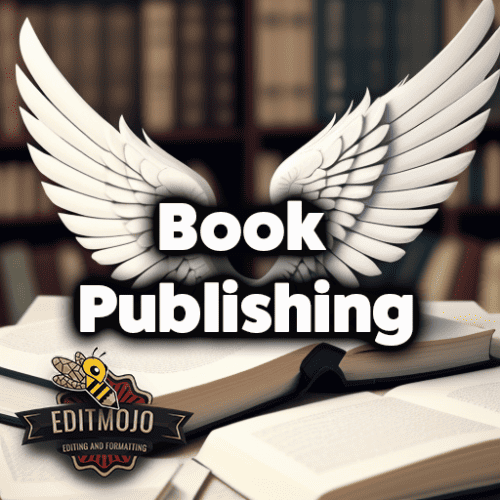
Understanding and Negotiating a Book Contract: Navigating the Legal Maze
Once an agent is hooked by your query and falls in love with your manuscript, they’ll use their industry expertise and network to sell your book to a publisher. This results in a book contract, the legal labyrinth that dictates the terms of your book’s publication.
At first glance, this document may seem as comprehensible as ancient hieroglyphs, but fear not! Your agent will help you decipher the legal jargon and negotiate the best deal possible. Remember, a good contract isn’t just about the advance you receive; it’s also about rights, royalties, and creative control.
The Role of the Publishing House: Turning Manuscripts into Magic
Finally, your manuscript arrives at the last stop on its journey before reaching readers—the publishing house. Here, it undergoes a metamorphosis, transforming from a humble document into a polished book, ready to inspire the world.
From editing and proofreading, to design and marketing, the publishing house is where the magic happens. They turn your manuscript into a tangible book, and ensure it reaches the right audience, making your literary dream a reality.
Traditional book publishing may seem like an intimidating labyrinth, but with the right guidance, perseverance, and a touch of creativity, it can be navigated successfully. It’s a journey that many great authors have traversed and come out on the other side shining. Will you be next?
The A-Z of Self-Publishing
In the world of the written word, the act of crafting a narrative, molding characters, and shaping landscapes with language is only the beginning. Stepping into the realm of book publishing, the terrain can appear daunting, mysterious, even Kafkaesque. However, within the labyrinth of publishing, a path has been carved out by tenacious wordsmiths and entrepreneurial spirits: self-publishing. It is the DIY of the literary world, and it can be your passport to global readership. Let’s embark on a journey from A to Z through the art of self-publishing.
Essential Steps for Self-Publishing Success
Much like a meticulously plotted novel, success in self-publishing requires careful planning and execution. It begins with a thorough edit, not just once or twice, but multiple times—your manuscript deserves that degree of dedication. A well-edited book not only enhances readability but also reinforces your credibility as an author.
Next, a captivating cover design is essential. As the first point of interaction with potential readers, your cover should both encapsulate your story and entice your audience. Consider investing in a professional designer, as a poorly designed cover can undermine the perceived value of your book.
Finally, strategize your book launch and marketing. Spreading the word about your book can take as much, if not more, effort as writing it. Social media, newsletters, press releases, book reviews—exploit every avenue you can to promote your literary labor of love.
Navigating Self-Publishing Platforms (Amazon KDP, Smashwords, etc.)
In today’s digital age, multiple platforms have emerged that enable writers to self-publish their works. The top contenders in this arena include Amazon Kindle Direct Publishing (KDP) and Smashwords.
Amazon KDP is the Goliath of self-publishing, offering a vast global readership. However, it’s essential to understand Amazon’s royalty structure, which depends on factors such as geographical location and book pricing.
Smashwords, on the other hand, is like the friendly neighborhood bookstore, offering a more approachable interface and better royalty rates. However, its reach is significantly smaller than Amazon’s.
When choosing a platform, weigh the pros and cons in relation to your book and personal objectives.
Budgeting for Self-Publishing
Budgeting is a crucial, yet often overlooked, aspect of self-publishing. While it’s possible to self-publish on a shoestring budget, certain investments can significantly improve your book’s success.
Costs to consider include editing, cover design, formatting, ISBN, and marketing. According to Reedsy’s data, the average cost of self-publishing a book ranges from $1,500 to $4,000. However, with strategic planning and careful resource allocation, you can effectively control your spending while ensuring a quality product.
Case Studies of Successful Self-Published Authors
To illustrate the potential of self-publishing, let’s take a peek at the stories of two successful self-published authors.
First, consider the case of Amanda Hocking, a paranormal romance writer. She began self-publishing her novels on Amazon KDP in 2010 and, by 2012, had sold over a million copies of her nine books and earned $2 million.
Then, there’s Andy Weir, who originally published his novel “The Martian” as a free serial on his website. After readers requested a Kindle version, he self-published it on Amazon, where it rocketed to the top of the science fiction best-seller list. It was eventually picked up by a traditional publisher and even became a blockbuster movie.
These authors’ stories showcase the limitless potential in self-publishing. While the path may not be easy, with the right approach, tools, and a dash of courage, you could be the next self-publishing success story.
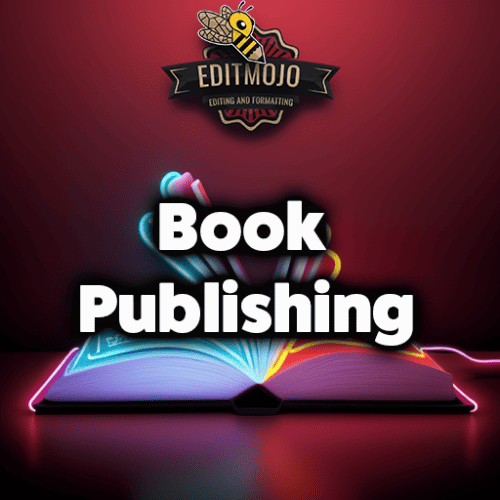
Hybrid and Vanity Publishing: An Inside Look
In the multifaceted world of book publishing, it’s not uncommon for authors to feel like explorers navigating uncharted territories. With traditional publishing, self-publishing, and a myriad of other options to consider, it’s a complex landscape. One that may seem daunting at first, yet also hold immense potential for authors willing to dive in. Today, we’re going to venture into two intriguing territories: hybrid publishing and vanity publishing.
How Hybrid and Vanity Publishing Work
Picture this. Hybrid publishing is like a potluck party – the publisher and author bring their unique skills and resources to the table, sharing the workload and rewards. Authors typically invest financially in the process, while the publisher takes care of the professional aspects such as editing, design, and distribution. It’s an attractive model for many, with its offering of creative control for authors and support akin to traditional publishers.
On the other side, we find vanity publishing – it’s somewhat like buying a ticket to a fancy gala. Authors cover all costs and the publisher takes care of the event (publication). Here, you’re paying for the pleasure of seeing your work in print, without the robust support system or market validation offered by other models.
Evaluating if They’re Right for Your Publishing Journey
While both options have their merits, it’s important to remember that no one-size-fits-all answer exists when it comes to publishing. The best model for you depends on your personal objectives, resources, and commitment level.
Hybrid publishing can be a great choice for those who want more control over their work, yet appreciate the support and expertise of a professional team. As Mark Twain once said, “Write without pay until someone offers to pay.” But with hybrid publishing, you don’t have to wait. You’re investing in your work and potentially earning returns more quickly than traditional routes.
Vanity publishing, on the other hand, is often selected by authors who have a deep personal desire to see their work in print, irrespective of sales or critical acclaim. These individuals might be less concerned with making a profit and more focused on leaving a legacy, sharing their story with friends and family, or achieving a personal goal.
Warnings and Precautions When Considering These Options
It’s always essential to tread with caution and do your due diligence before embarking on either of these routes. Some “publishers” are little more than predatory businesses looking to capitalize on authors’ dreams, so it’s critical to research and vet potential partners thoroughly.
For example, reputable hybrid publishers should have a clear contract, a proven track record, and transparent fees. They should be upfront about what they offer, such as professional cover design, comprehensive editing, or marketing support.
In vanity publishing, be aware that while you’re paying for the publication, this does not guarantee any level of sales or recognition. Additionally, vanity publishers do not always offer the same quality of services or products that you might find with a traditional or reputable hybrid publisher. The key here is to know exactly what you’re getting into and adjust your expectations accordingly.
Remember, as in any journey, the path to publishing is strewn with challenges and opportunities alike. Whether you choose the route of hybrid or vanity publishing, make sure it’s the one that serves your unique aspirations as an author and brings you one step closer to your ultimate destination: sharing your words with the world.
Unveiling the Magic: Book Publishing
Before a book lands in a reader’s hands, it travels a captivating journey, a journey laced with creativity, ingenuity, and, at times, sheer perseverance. This journey is known as book publishing, a term that encompasses everything from the inception of an idea to the marketing strategies to sell the final product. Today, let’s unfurl the curtain on the last crucial stage of this adventure: marketing your book.
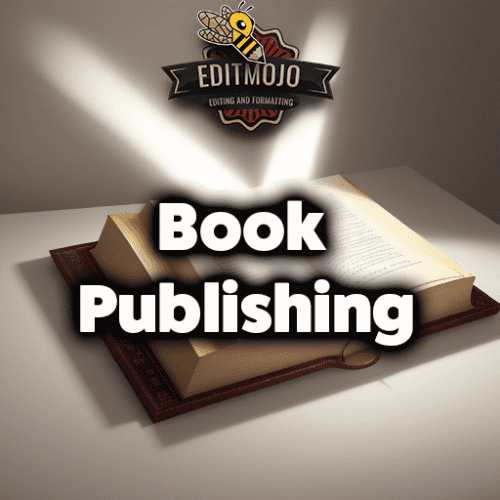
VIII. Marketing Your Book
Picture this: your book, the product of countless hours of sweat, toil, and inspiration, is finally published. Now, you might wonder, what next? This is where a robust marketing strategy jumps into play.
A. Building an Author Platform
Constructing an author platform is a cornerstone in book marketing. Imagine it as a virtual stage, a grand platform where you connect with readers, reveal snippets about your book, and essentially build your author’s persona. This platform can be a personal blog, a website, or a curated social media profile. The key here is consistency, authenticity, and engaging content. Remember, your platform is more than just a billboard for your book; it’s a reflection of you as an author.
B. Utilizing Social Media Effectively
In the digital era, ignoring social media in your book marketing strategy is akin to ignoring a goldmine of opportunities. Platforms such as Facebook, Twitter, and Instagram offer a wealth of tools to reach a global audience.
From conducting live author chats, sharing behind-the-scenes insights, to hosting giveaways, social media marketing is all about creativity. The trick is to think less about selling and more about engaging. Let your audience into your world, your book’s universe, and they’ll follow you on this incredible journey.
C. Employing Book Marketing Strategies
Traditional book marketing strategies have a charm that remains untouched, even in our digital-driven world. From book tours, signings, and readings to sending out press releases, these strategies create a personal connection with the readers. Case in point, J.K. Rowling’s Harry Potter book tours, which contributed to building a global community of Potterheads. However, they require planning, resources, and time. Keep your audience, resources, and book genre in mind when deciding on these strategies.
D. Understanding and Utilizing Amazon’s Algorithms
In the labyrinth of book marketing, Amazon’s algorithms can be your guiding compass. Understanding these algorithms can be a game-changer for boosting your book’s visibility on the biggest virtual bookstore. Amazon’s algorithms favor books that sell, receive good reviews, and have a polished online presence. So, ensure your book is in the right category, has an eye-catching cover, and compelling book description. It’s also crucial to gather as many reviews as you can, a process that starts right from your author platform.
In the vast and vibrant world of book publishing, marketing your book might seem like a herculean task, one filled with complex algorithms,
virtual platforms, and networking events. Yet, with a pinch of creativity, a dash of persistence, and a generous serving of passion, the challenge morphs into an opportunity—an opportunity to share your book with the world. After all, a well-marketed book is a book that is read, cherished, and remembered. The world awaits your story. Happy publishing!
Embracing the Financial Odyssey of Book Publishing
Entering the enchanting world of book publishing can feel like diving headfirst into an ocean of creativity, opportunity, and let’s face it – complexity. Beyond the realm of romanticized ideas about book signings and bestseller lists, lies a significant financial dimension. It’s a world filled with royalties, advances, pricing decisions, and real-world budgeting. Let’s shed some light on the often-baffling maze of the financial aspect of book publishing.
How Authors Make Money: Royalties, Advances, and Rights
A tapestry woven of royalties, advances, and rights is the primary means through which authors reap financial benefits from their work. It can be confusing, but let’s untangle it.
Royalties are the backbone of an author’s income. An author earns a certain percentage of each book’s sale as royalty, typically ranging from 10% to 15% for print books and up to 25% for ebooks. The exact percentage, however, relies heavily on the contract between the author and publisher.
Advances are essentially pre-paid royalties. An author receives an advance before the book hits the shelves. However, the author won’t see any additional royalty payments until the advance has been ‘earned out’ i.e., covered by actual book sales. This publishing contract guide gives a clear understanding of how advances work.
Lastly, rights. Authors can also profit from selling various rights of their book, such as audio rights, film rights, or foreign language rights.
Pricing Your Book: Factors to Consider
Pricing your book might seem like a simple act of slapping a tag on a product. In reality, it’s more like playing a game of chess with a rainbow of variables. The price should reflect the value of your work but should also be competitive within the market. Factors like production costs, genre, length, comparable titles, and whether it’s a debut or a work by an established author all play into this financial decision.
A valuable read for authors navigating their book’s pricing strategy is this comprehensive guide.
The Cost of Publishing: A Breakdown
We’ve explored ways to earn money; now let’s discuss how to spend it wisely in publishing. Publishing a book isn’t a cost-free venture; expenses can arise at each step, whether it be editing, cover design, formatting, or marketing.
Traditional publishing might save you from upfront costs, as the publisher incurs them. But if you’re venturing into self-publishing, you shoulder these costs yourself. A well-budgeted book can cost between $2000 and $4000 to self-publish, depending on the extent and quality of services you choose.
To get a detailed understanding of costs associated with self-publishing, this cost breakdown is a must-read.
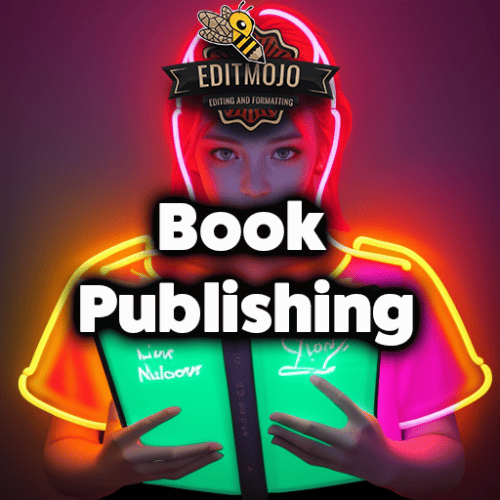
A Realistic Look at Financial Success in Publishing
When dreaming of financial success in publishing, it’s essential to keep a realistic perspective. Not every author is going to become the next J.K. Rowling or Stephen King. However, that doesn’t mean you can’t make a living from your words. Financial success is subjective and often depends on your personal goals and the effort you’re willing to put into marketing your book.
Book publishing can indeed be a profitable
venture, but it’s also a labor of love. Success doesn’t usually come overnight; it takes persistence, patience, and an unyielding belief in your literary prowess. As the author, E.L. Doctorow, once said, “Writing is an exploration. You start from nothing and learn as you go.”
Whether you’re about to step into the enchanting world of book publishing or you’re an old hand navigating the financial labyrinth, remember, the journey is as rewarding as the destination itself.
Understanding Book Publishing: A Guide for Aspiring Authors
In the ever-evolving world of storytelling, book publishing remains a fundamental avenue for authors seeking to share their narratives with the world. As a complex, multifaceted process, it requires careful navigation, thorough understanding, and meticulous attention to detail. It’s both a beautiful journey and a challenging voyage, and every author must embark on it armed with the right knowledge and tools.
The Stages of Book Publishing
Book publishing is not a monolithic process; rather, it involves several distinct yet interconnected stages, each with its own intricacies and challenges.
Crafting a Manuscript
It all begins with an idea – a seed from which a full-fledged narrative can bloom. Authors often spend months, if not years, meticulously crafting their stories into a cohesive manuscript. This stage involves endless hours of writing, editing, revising, and rewriting, transforming a mere idea into a tangible piece of art.
Finding the Right Publisher
Once the manuscript is complete, the hunt for the right publisher begins. Some authors prefer traditional publishing houses like Penguin Random House or HarperCollins, while others opt for self-publishing platforms like Amazon Kindle Direct Publishing (KDP). The choice depends largely on the author’s personal preferences, resources, and the specific nature of their book.
Production Process
The production process involves several sub-steps, including proofreading, layout design, cover design, and printing (for physical books). This phase requires meticulous attention to detail to ensure the final product is not only visually appealing but also devoid of typographical errors or layout issues.
Marketing and Distribution
Once the book is ready for public consumption, it’s time to market and distribute it. This stage involves promoting the book through various channels (social media, author websites, book tours, etc.) and ensuring its availability in physical and online bookstores.
Resources and Additional Reading
Suggested Books on Book Publishing
For those interested in delving deeper into the world of book publishing, the following books are highly recommended:
- “The Business of Being a Writer“ by Jane Friedman: A comprehensive guide to understanding the business aspects of book publishing.
- “Publishing 101: A First-Time Author’s Guide“ by Jane Friedman: An excellent primer for first-time authors navigating the publishing process.
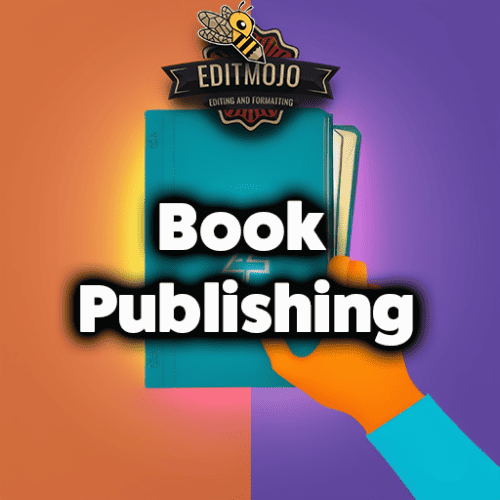
Useful Websites and Online Forums for Authors
Beyond books, the internet is a treasure trove of resources for authors. Websites like Writer’s Digest offer a wealth of tips and advice, while forums like Absolute Write provide a supportive community for authors at all stages of their writing journey.
Tools and Software Beneficial for Writers and Publishers
In the digital age, software tools can make the book publishing process more manageable. For instance, Scrivener is a popular writing software that allows authors to organize their ideas and manuscripts effectively. For self-publishers, Reedsy offers a range of services from editing to cover design.
Book publishing is a complex yet deeply rewarding process. It’s a journey filled with highs and lows, but ultimately, the thrill of seeing your story in print is an unparalleled experience. Whether you’re a seasoned author or a beginner at the start of your journey, the right knowledge, resources, and tools can make all the difference.
Top ten list of common questions and answers related to book publishing:
| Question | Answer |
|---|---|
| 1. What is the difference between traditional publishing and self-publishing? | Traditional publishing involves a contract with a publishing house. They cover the costs of editing, designing, and marketing the book, but they also retain a significant portion of the profits. Self-publishing means the author retains full control and all profits, but they must handle all aspects of publishing themselves or hire professionals to assist. |
| 2. How long does it usually take to publish a book? | It can vary greatly, but typically, traditional publishing takes about 1-2 years from acceptance of a manuscript to a book being on the shelves. Self-publishing can be much quicker, often only a matter of months or even weeks, depending on the author’s preparedness and resources. |
| 3. How can I find a literary agent? | You can find a literary agent by researching reputable agencies that represent your genre of work. Then, prepare a query letter or proposal to send to them, following their submission guidelines closely. |
| 4. What are the typical costs associated with self-publishing? | Costs for self-publishing can include professional editing, cover design, formatting, ISBN registration, printing, distribution, and marketing. Depending on the quality and extent of services, these can range from a few hundred to several thousand dollars. |
| 5. How much can I expect to earn from my book? | Earnings can vary widely depending on the success of the book, the method of publishing, and the book’s price point. Most traditionally published authors earn 7-25% royalties on physical books and 25-50% on ebooks, while self-published authors may earn 70% or more from ebook sales on platforms like Amazon. |
| 6. What is a book proposal and why do I need one? | A book proposal is a document that you present to a publisher or agent to convince them to publish your book. It typically includes a summary of your book, a market analysis showing who will buy your book, sample chapters, and your bio. A good proposal can be key to getting a traditional publishing deal. |
| 7. What does a book editor do? | A book editor works with the author to improve the quality of their manuscript. This can involve checking for errors (copy-editing), suggesting improvements to the flow or structure of the book (developmental editing), or ensuring consistency in style and tone (line editing). |
| 8. What is an ISBN and why do I need it? | An ISBN (International Standard Book Number) is a unique identifier for your book, used by retailers and libraries to track and order books. If you’re self-publishing, you’ll need to acquire an ISBN to sell your book in most online and physical bookstores. |
| 9. How can I market my book? | Marketing strategies can include social media promotion, email newsletters, blog tours, press releases, paid advertisements, and book signings. Building an author platform and audience prior to release can be very beneficial. |
| 10. How do I protect my book from being copied? | Your work is automatically protected by copyright law as soon as it’s created and fixed in a tangible form. However, formally registering the copyright can provide additional legal protection. It’s also important to be careful about who you share your work with before it’s published. |
Top ten resources and further reading for more in-depth information about book publishing:
| Resource | Description |
|---|---|
| 1. Writer’s Digest | A comprehensive resource for writers at every stage of their careers. Offers advice on writing, querying, publishing, and marketing. |
| 2. Jane Friedman’s Blog | Jane Friedman is a publishing industry expert, and her blog offers numerous resources and articles about the business of writing and publishing. |
| 3. The Creative Penn | Run by Joanna Penn, a successful self-published author, this site provides abundant resources on writing, self-publishing, book marketing, and creating an author business. |
| 4. Publishers Weekly | An international news website dedicated to book publishing and bookselling, including business news, reviews, bestseller lists, commentaries, and more. |
| 5. Reedsy | A platform where you can find professionals to help with all aspects of book publishing, from editors and cover designers to marketing experts. They also have a blog with useful articles and free courses. |
| 6. Association of American Publishers | The largest U.S. trade association for the consumer, educational, professional and scholarly publishing industry. They offer research, news, and resources related to traditional publishing. |
| 7. IngramSpark’s Blog | Provides a lot of valuable information about the self-publishing process, from the writing stage to book distribution. |
| 8. Self Publishing Formula | Offers courses, podcasts, and blog posts about self-publishing and marketing your book. It’s run by Mark Dawson, a successful self-published author. |
| 9. Kindle Direct Publishing (KDP) | Amazon’s own publishing arm provides tools and resources for independent authors who want to self-publish. The associated community and help forums can be very helpful. |
| 10. The Chicago Manual of Style | A comprehensive guide to style, usage, and grammar in an accessible format. Many publishers and agents prefer manuscripts to be formatted according to the Chicago Manual of Style. |

Here is a fun interactive quiz related to the topic of book publishing:
- What does ISBN stand for?
a. International Standard Book Number
b. Individual Serial Book Number
c. Internet Secure Book Network - What is the term for a book that a publisher believes will become a bestseller?
a. Top Seller
b. Lead Title
c. Gold Book - What is the process of arranging a written, audio, or video content into a specific format?
a. Editing
b. Formatting
c. Proofreading - Which famous author initially self-published?
a. J.K. Rowling
b. E.L. James
c. George R.R. Martin - What does a literary agent do?
a. Writes books for other people
b. Sells books directly to the public
c. Represents authors to publishers - What is a book proposal typically used for?
a. It is used to convince a publisher to publish your book
b. It is used to register your book’s ISBN
c. It is used to copyright your book - What is the term for making a book available for purchase?
a. Listing
b. Publishing
c. Advertising - What is vanity publishing?
a. A form of publishing where the author pays to have their book published
b. A publishing company that only publishes books about beauty
c. A publishing house that only deals with famous authors - What’s the royalty percentage typically earned by authors on ebooks in self-publishing?
a. 15-25%
b. 30-50%
c. 70% or more - What does POD stand for in the publishing industry?
a. Print On Demand
b. Post On Delivery
c. Publish Or Dismiss
Answers: 1(a), 2(b), 3(b), 4(b), 5(c), 6(a), 7(b), 8(a), 9(c), 10(a)
